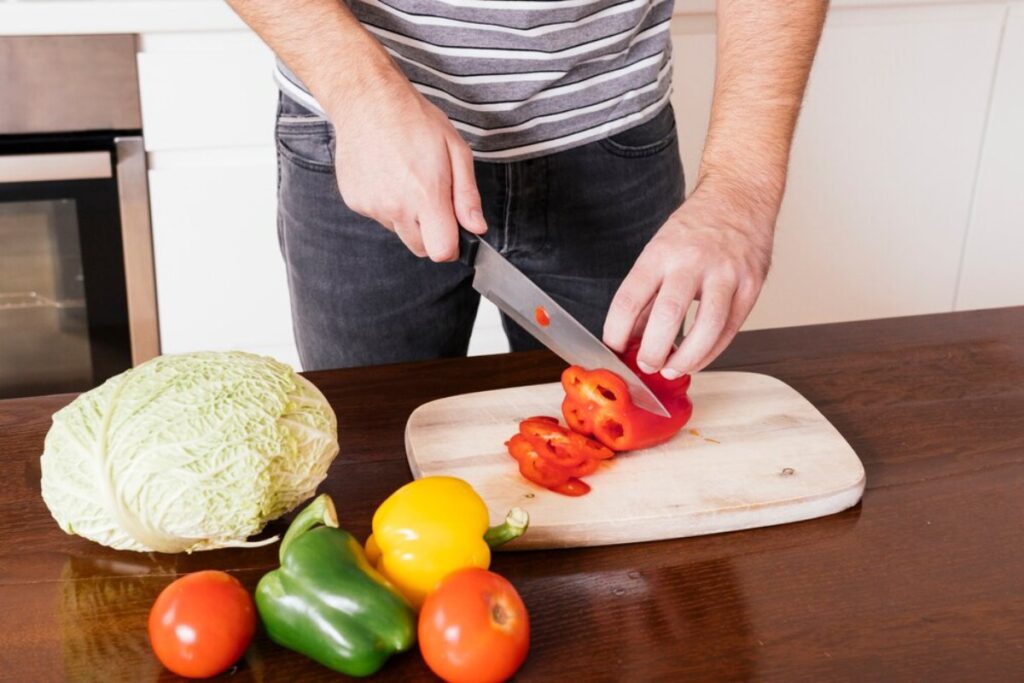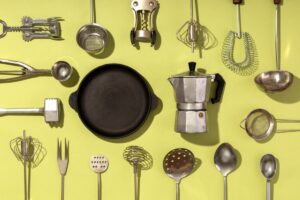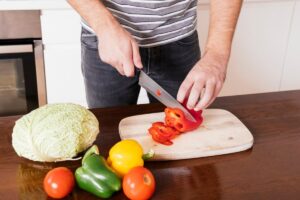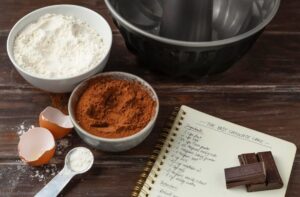The Food Blog

Knife Skills Demystified: Cutting Techniques for Efficiency
Knife skills are the unsung heroes of cooking. Cutting techniques often take a backseat to recipes and ingredients. However, they play a key role in how fast you prep and how food looks. Good knife skills can boost your kitchen efficiency, safety, and dish quality. This is true for both home cooks and aspiring chefs.
The good news? You don’t need to attend culinary school to master the basics. Anyone can improve their chopping skills with the right tips, tools, and practice. This makes cooking faster and more fun.
In this guide, we’ll simplify knife skills, cover essential cuts, and explain the right techniques. This will help you work confidently and quickly in the kitchen.
The Foundation: Choosing the Right Knife
1. The Essential Trio
You don’t need a drawer full of blades. Three quality knives can handle 90% of your kitchen tasks:
- Chef’s Knife (8–10 inches): Your go-to for slicing, dicing, chopping, and mincing.
- Paring Knife (3–4 inches): Ideal for peeling, trimming, and detailed work.
- Serrated Knife (Bread Knife): Great for tomatoes, citrus, and—you guessed it—bread.
2. Quality Over Quantity
Choose high-carbon stainless steel or Japanese steel knives. Look for a comfortable handle and a balanced weight. A dull or cheap knife will slow you down and increase your risk of injury.

Knife Safety and Maintenance Tips
Before you dive into the techniques, a few safety reminders:
- Keep your knives sharp. Dull blades are more dangerous because they require more pressure.
- Use a stable cutting board. Place a damp towel underneath to prevent slipping.
- Curl your fingertips inward. The “claw grip” protects your fingers and stabilises the food.
- Cut away from your body, and never try to catch a falling knife.
- Clean and dry knives immediately after use. Store them safely in a knife block or on a magnetic strip—never loose in a drawer.
Proper care extends the life of your knives and makes every cut smoother.
Essential Knife Cuts Every Cook Should Know
Master these key cutting techniques for speed, consistency, and a great look.
1. The Slice
Use for: Meat, bread, fruits, and vegetables.
Technique: Make long, smooth strokes with the blade’s full length. Keep even pressure and let the knife do the work.
2. The Dice (Large, Medium, Small)
Use for: Onions, carrots, peppers, and potatoes.
Technique: First, slice into even planks. Next, cut them into sticks. Finally, dice them into cubes. Smaller dicing allows for faster, more even cooking.
3. The Julienne
Use for: Carrots, zucchini, and bell peppers.
Technique: Cut vegetables into long, thin matchstick-like strips. Ideal for stir-fry, salads, or garnishes.
4. The Chiffonade
Use for: Herbs like basil, mint, and spinach.
Technique: Stack leaves, roll them tightly like a cigar, then slice them thinly. This creates elegant ribbons.
5. The Mince
Use for: Garlic, herbs, and onions.
Technique: Rock your chef’s knife. Keep the tip on the board. Use your free hand to guide the blade.
6. The Batonnet and Brunoise
- Batonnet: Rectangular sticks (¼ inch wide)
- Brunoise: Tiny cubes (⅛ inch), derived from bonnet sticks
These precision cuts are perfect for an upscale look or when you want specific textures.
Technique Breakdown: The Rocking Motion vs. Chopping
There are two main cutting motions used for efficiency and safety:
The Rocking Motion
- Ideal for herbs, onions, and soft veggies
- Keep the knife’s tip on the board, rocking the heel up and down like a seesaw
- Minimises effort and increases speed
The Chopping Motion
- Best for dense foods like sweet potatoes or squash
- Use an up-and-down motion, lifting the entire knife
- Keep fingers curled and food stable
Mastering both will give you flexibility based on what you’re prepping.
Common Knife Mistakes That Waste Time
To become more efficient, it’s essential to recognise and correct common pitfalls:
- Using the wrong knife for the task
- Chopping wildly instead of with purpose
- Holding the knife incorrectly (too far back on the handle or no grip control)
- Not stabilising your cutting board
- Ignoring consistency in size—uneven cuts = uneven cooking
Correcting these habits can shave minutes off prep time and deliver better-cooked meals.

Knife Skills and Meal Prep Efficiency
Think of knife mastery as an investment. Batch-prepping veggies, proteins, or herbs can save you much time during the week.
Here’s how excellent knife skills help in meal planning:
- Pre-cut veggies store better and save time on busy nights
- Consistent sizes reduce cook time variability
- Proper slicing improves ingredient absorption (think marinades)
- Less waste means you get more out of each ingredient
With repetition, your muscle memory builds. What once took 30 minutes might take just 10.
Training Tips to Improve Your Knife Skills
Like any skill, knife techniques improve with practice. Try these simple ways to level up:
- Practice cutting onions every week. It teaches multiple cuts in one go (halving, slicing, dicing).
- Use a stopwatch to time your cuts. This helps you get faster while staying accurate.
- Cut everything by hand for one week. Skip food processors or pre-cut veggies. You’ll build confidence fast.
- Take a knife skills class—in-person or virtual. A little expert guidance goes a long way.
How Knife Skills Enhance Your Overall Cooking Game
Better knife skills boost your prep work and open the door to advanced cooking techniques:
- Better searing: Uniform cuts = even browning
- Faster stir-frying: Small, consistent pieces cook lightning-fast
- Nicer plating: Sharp, clean cuts elevate the visual presentation
- Less mess: More control means fewer spills and accidents
In short, your meals taste, look better, and take less time.
Conclusion: Sharpening Your Edge in the Kitchen
Mastering knife skills is one of the most empowering steps you can take in your cooking journey. Good cooking techniques make a big difference. Dicing onions or julienning veggies can boost flavour and speed up meals. Plus, you’ll feel more confident in the kitchen.
Cutting will become a culinary art when you know your tools, practice often, and learn to move well.
Grab your chef’s knife, steady your board, and start slicing. You’ll enjoy a skilful kitchen experience.









